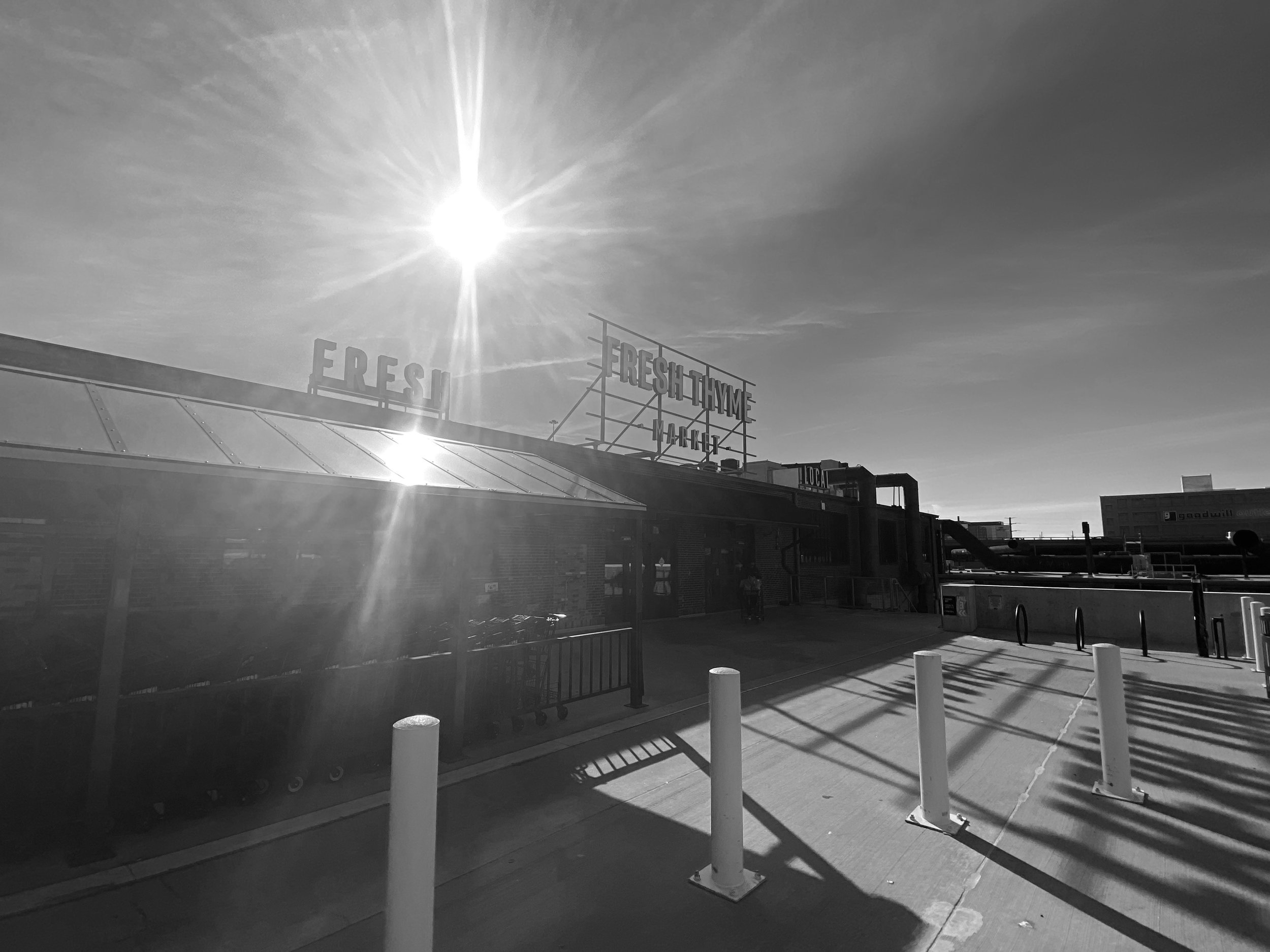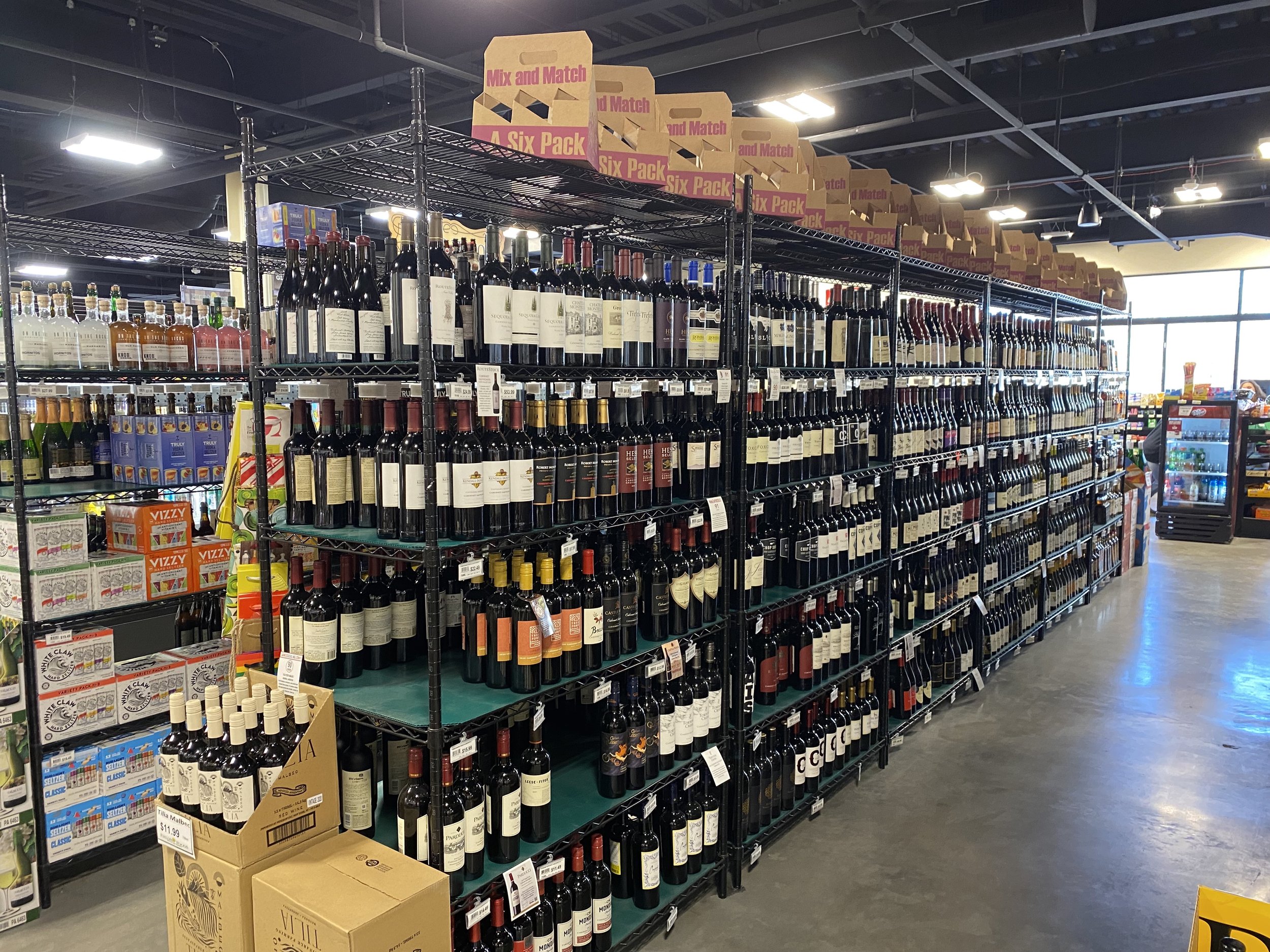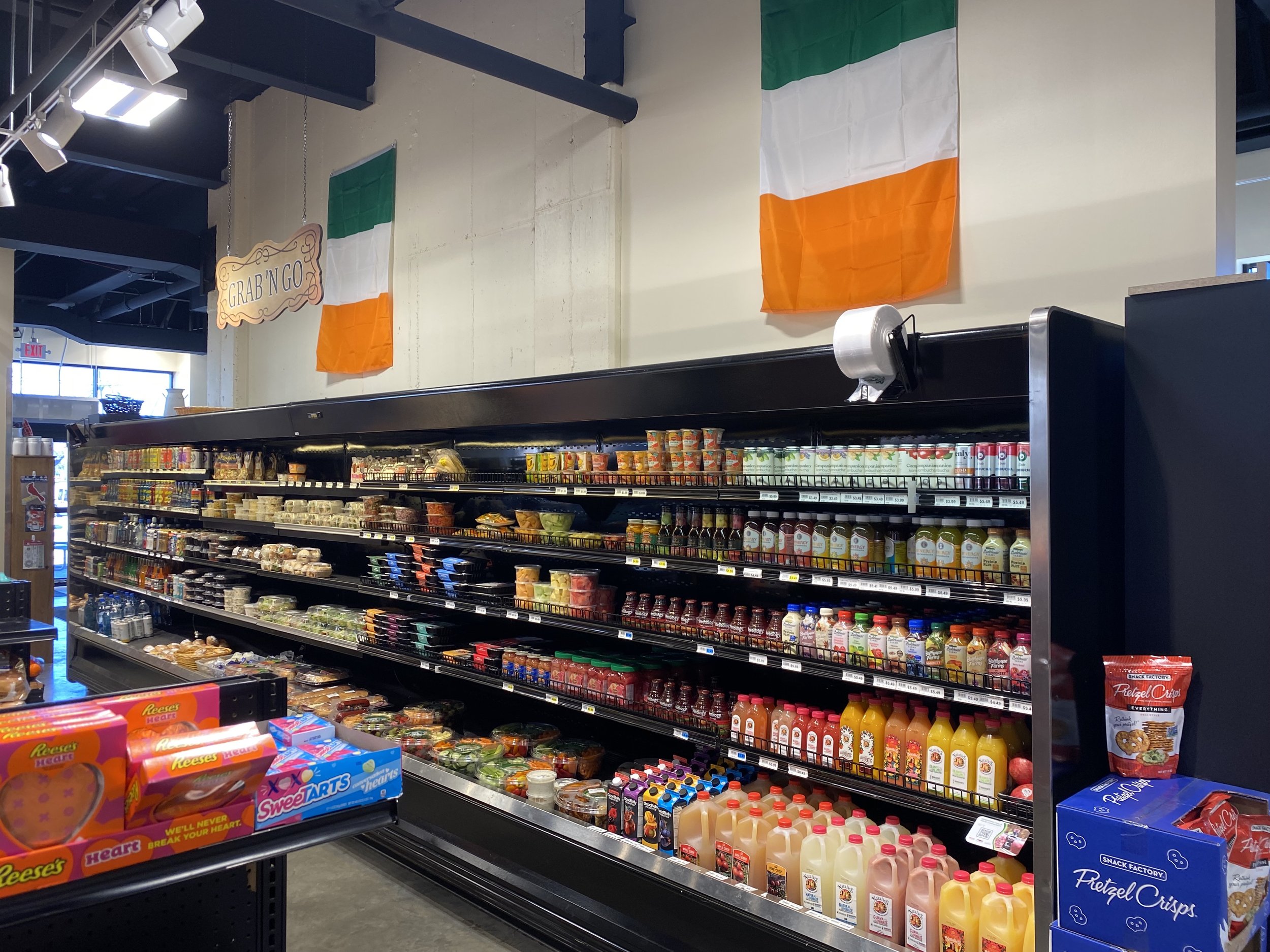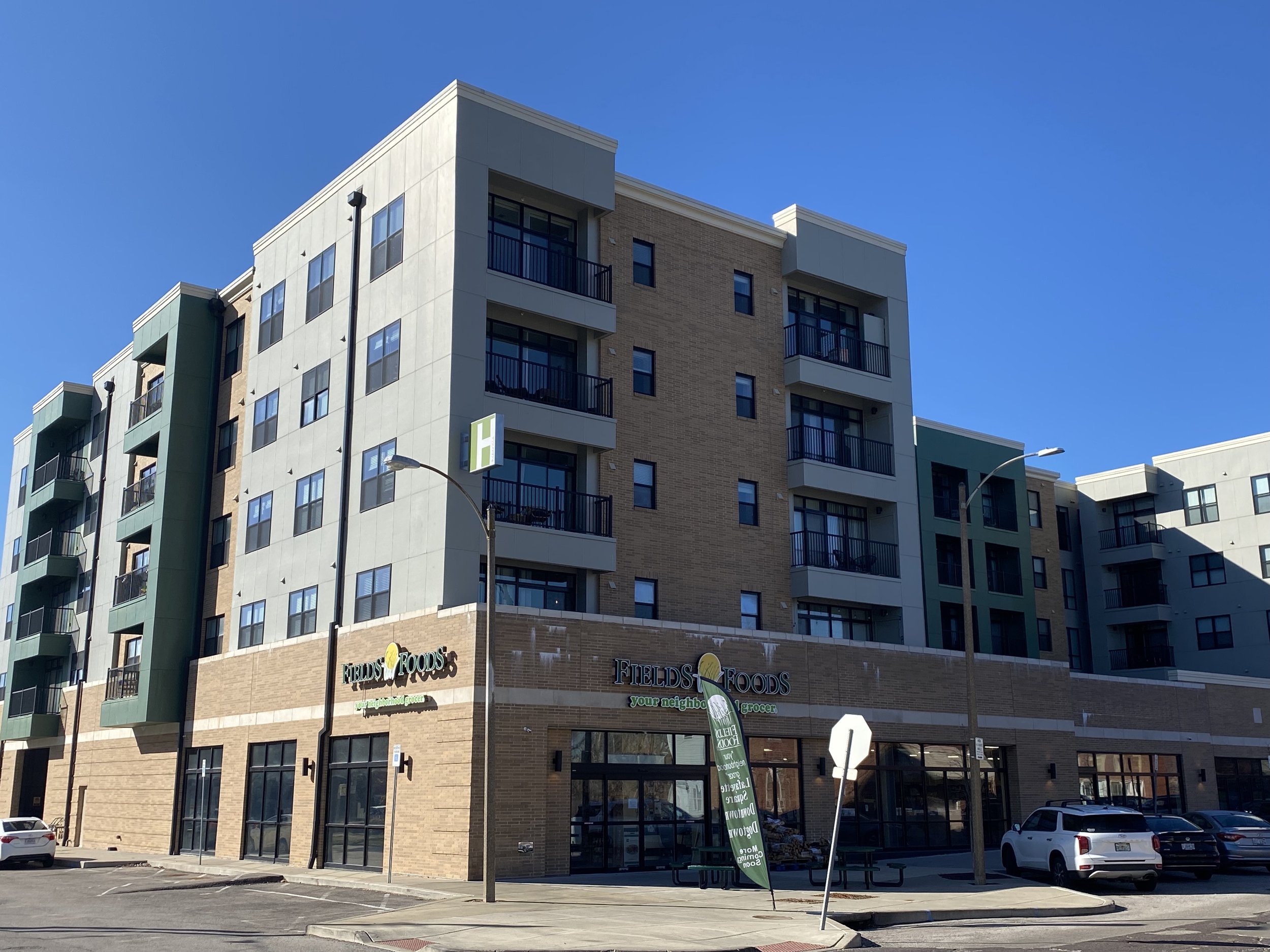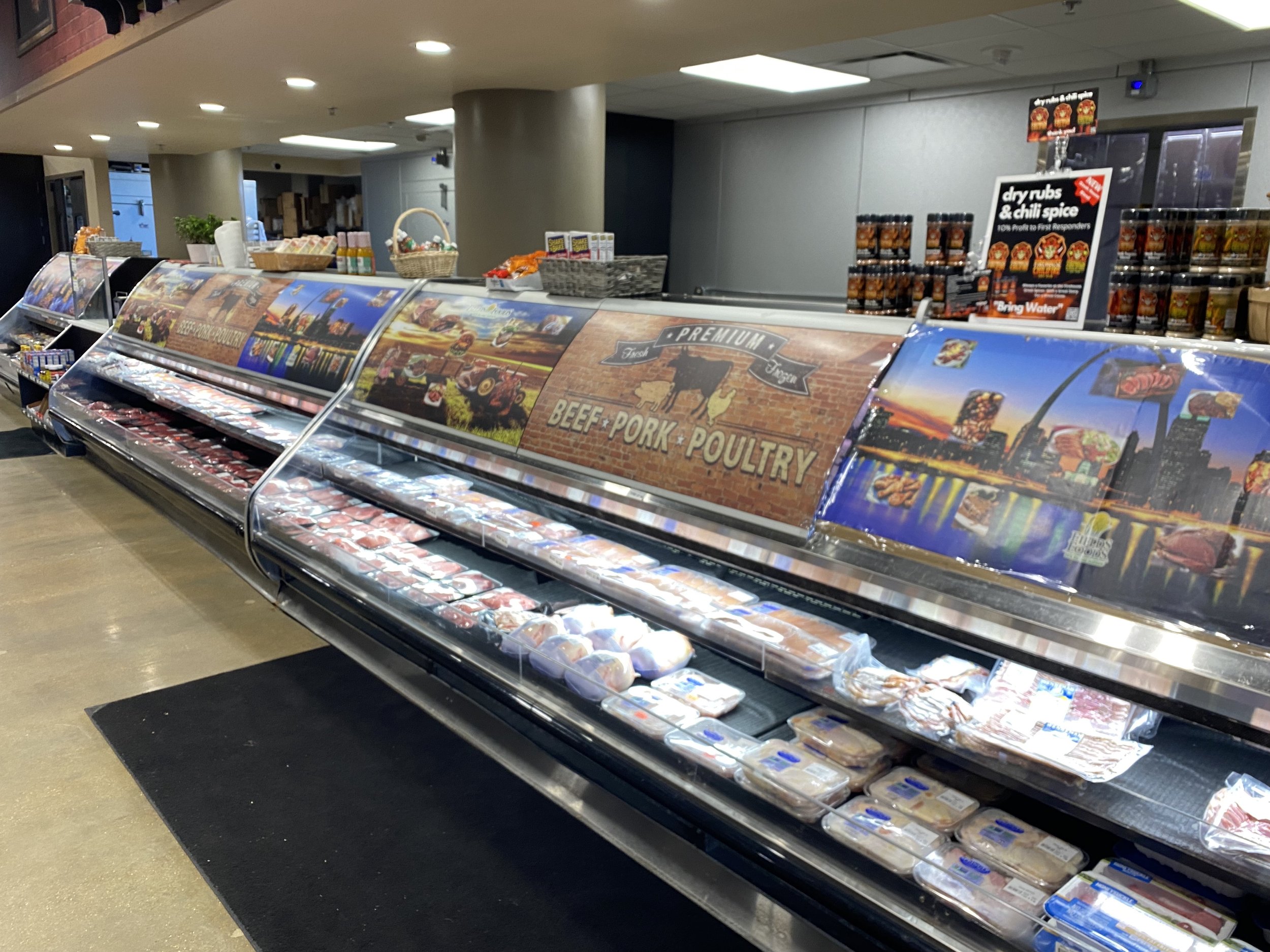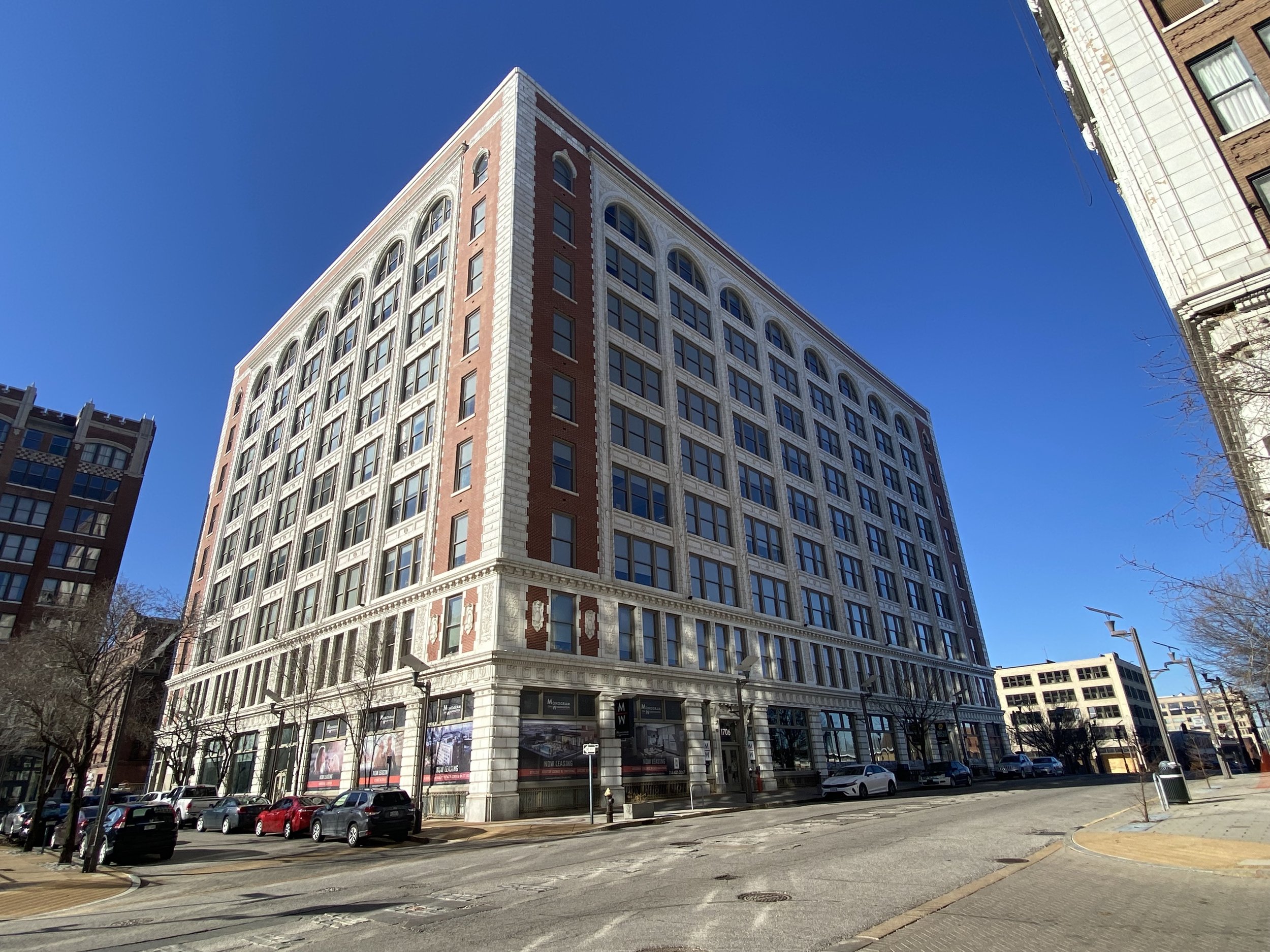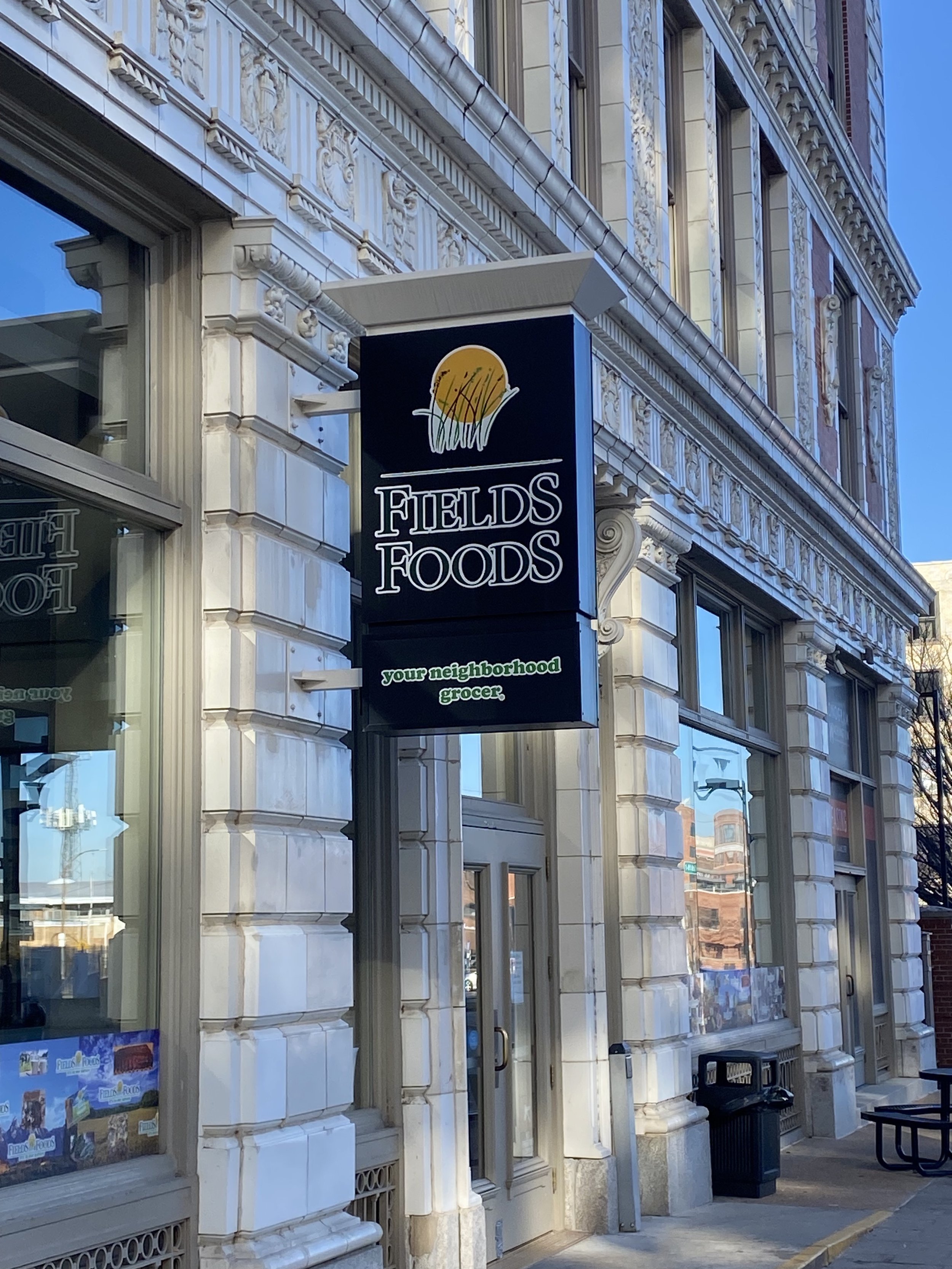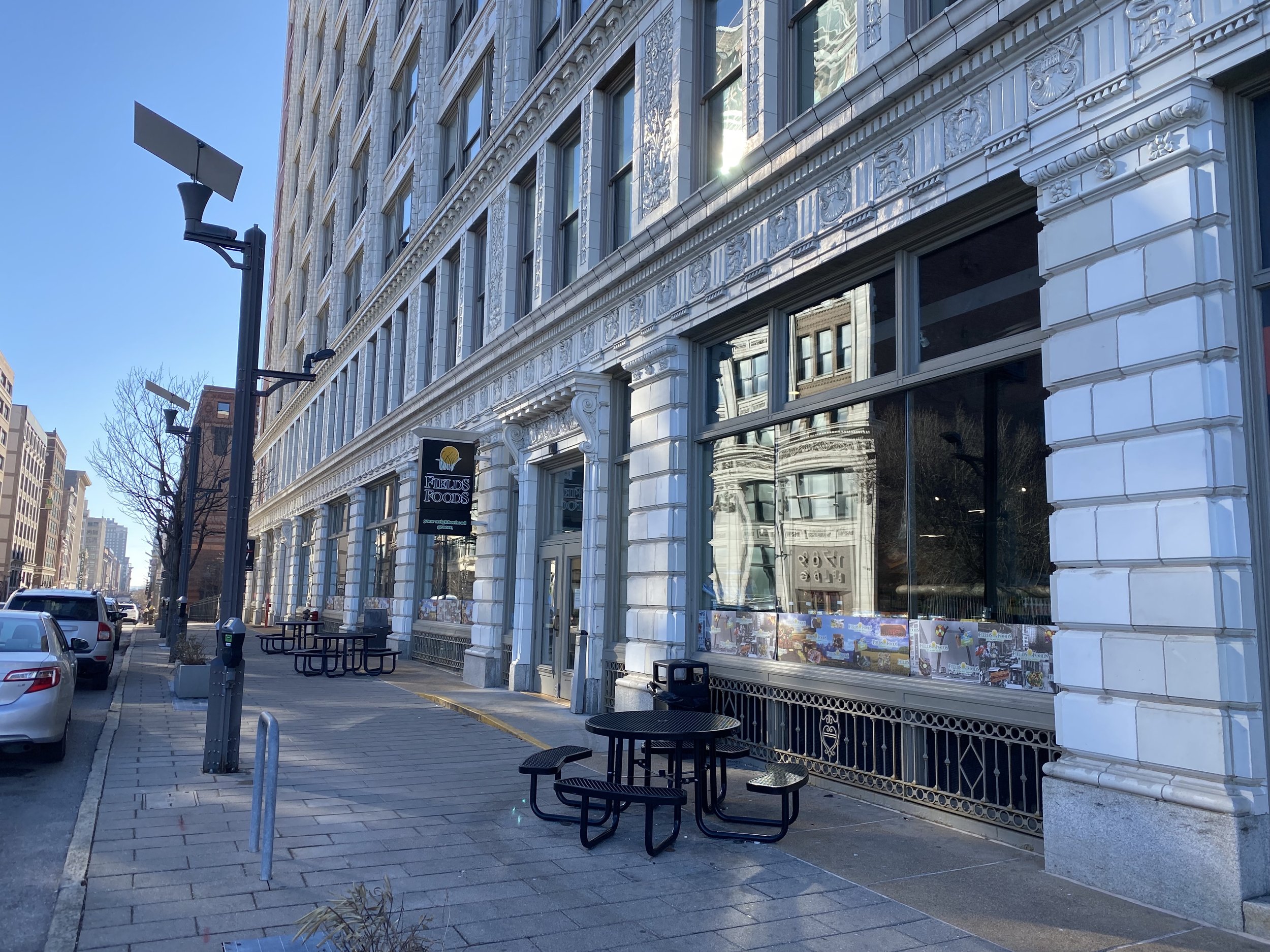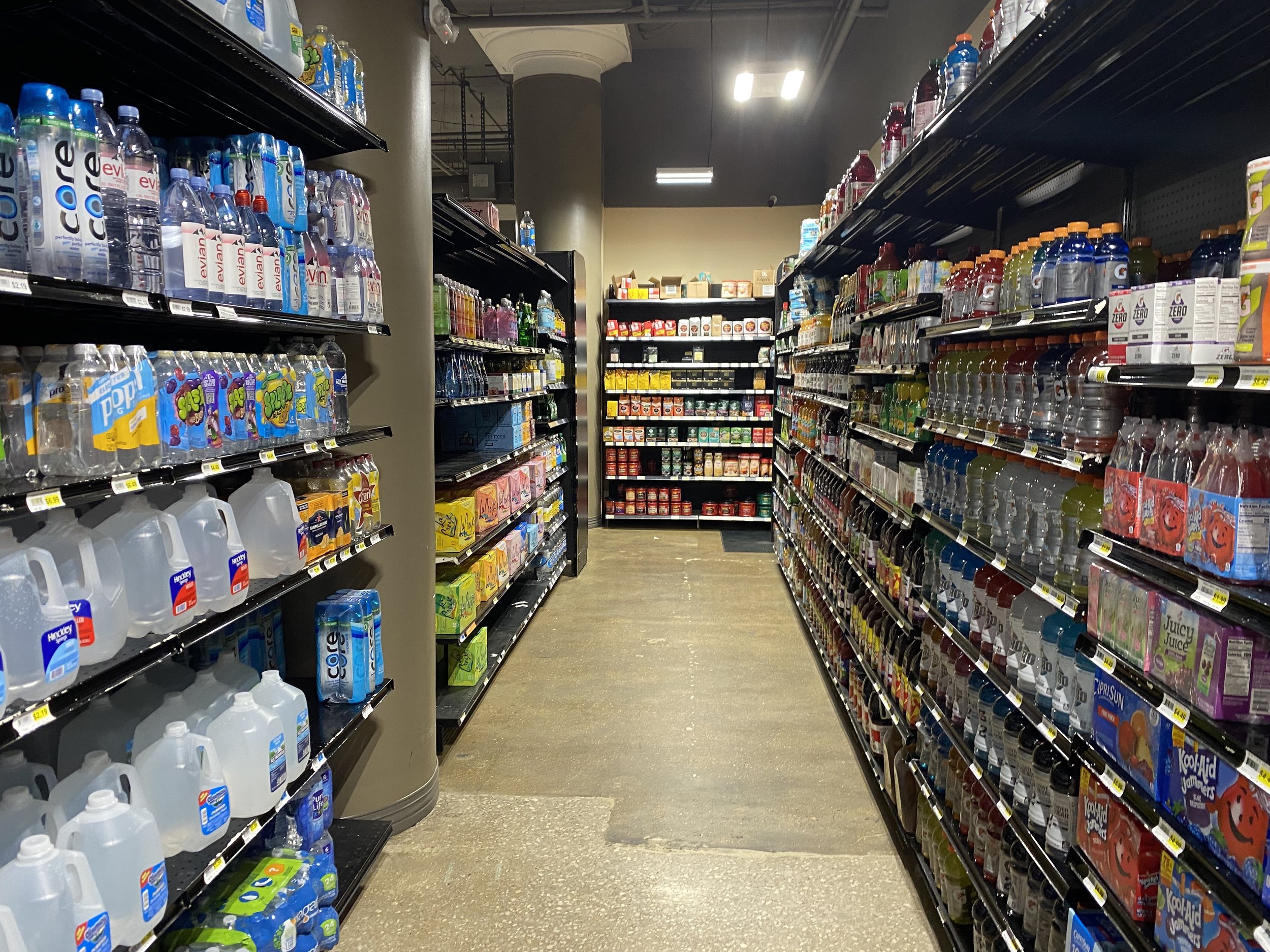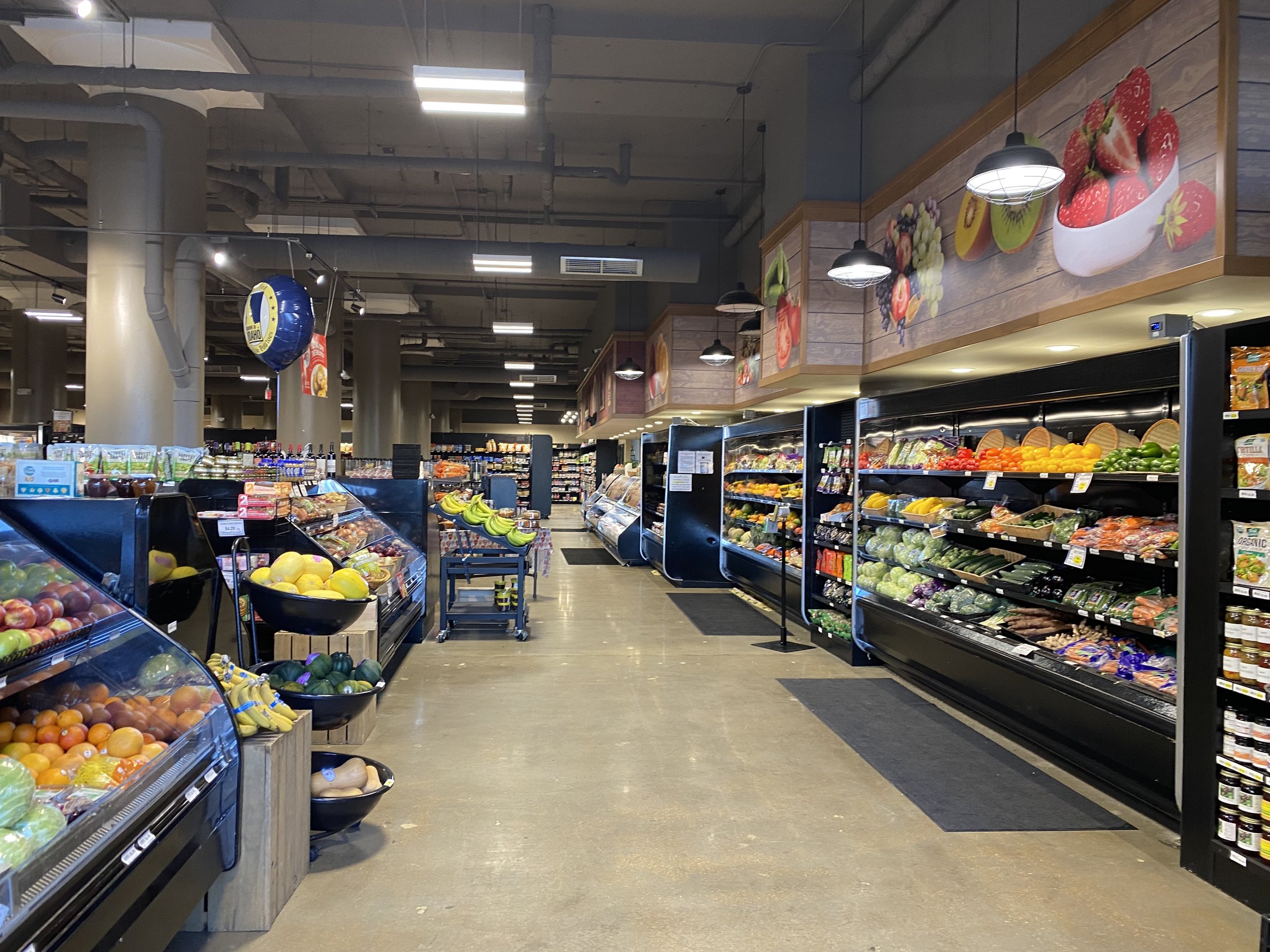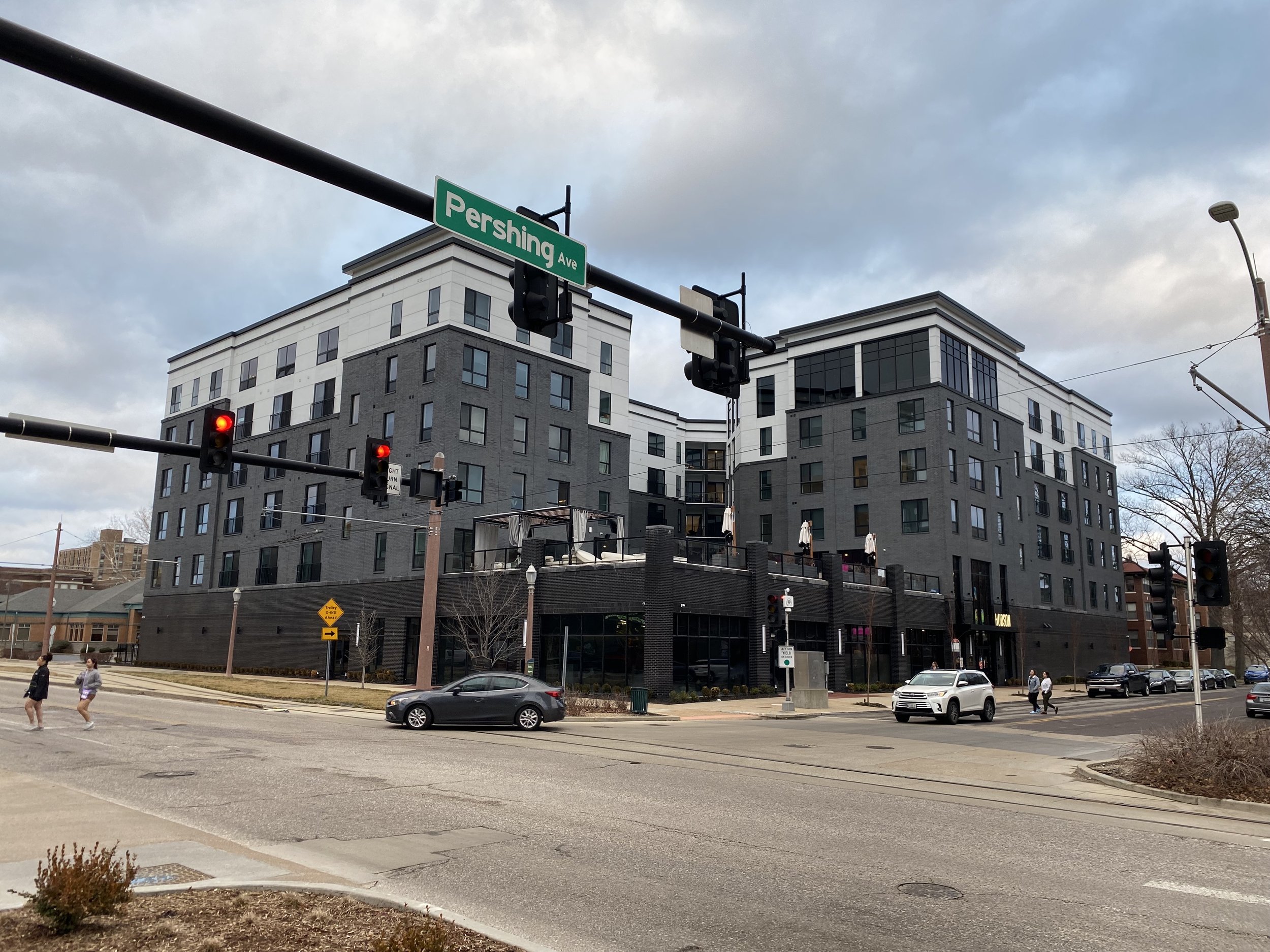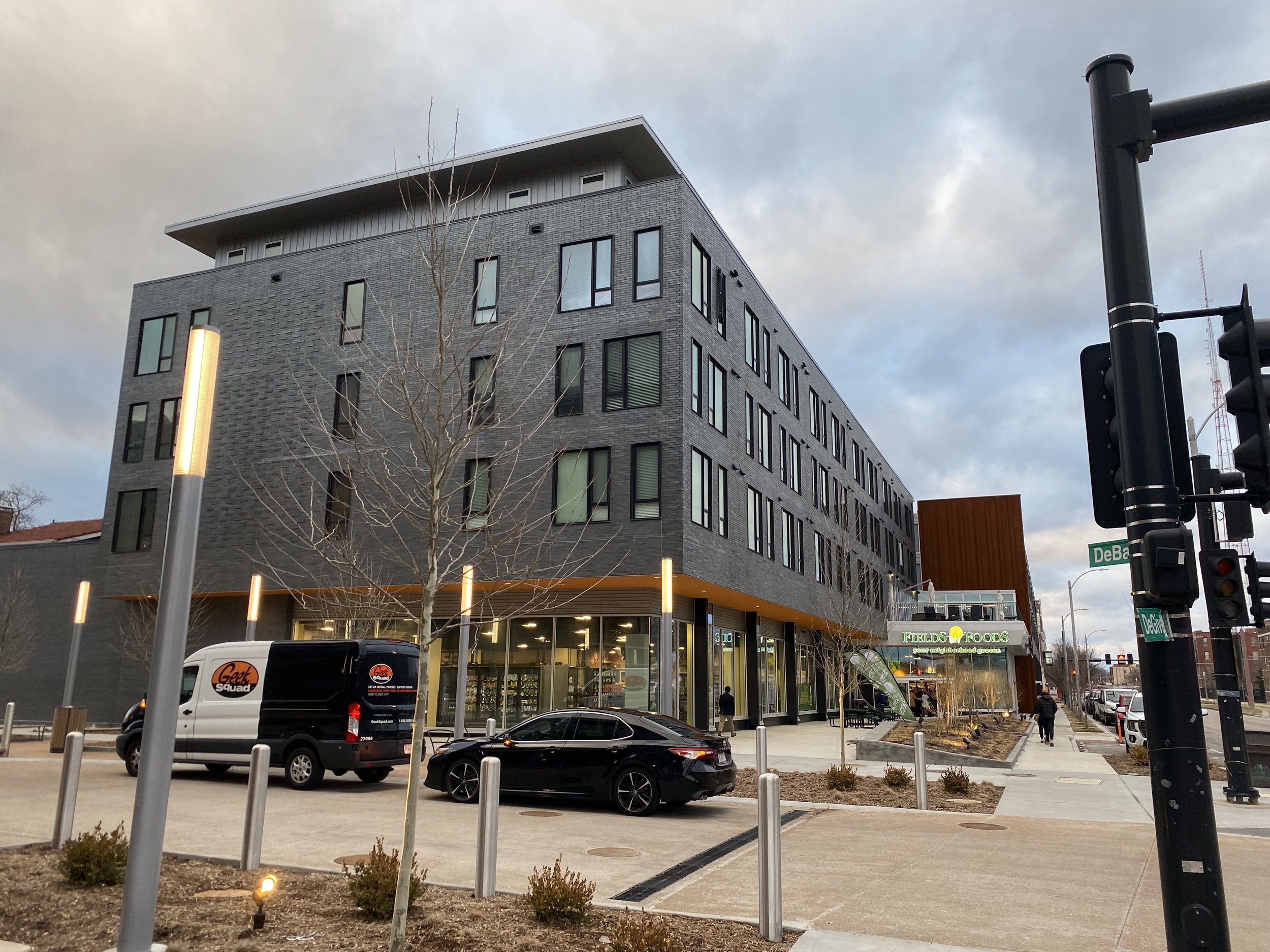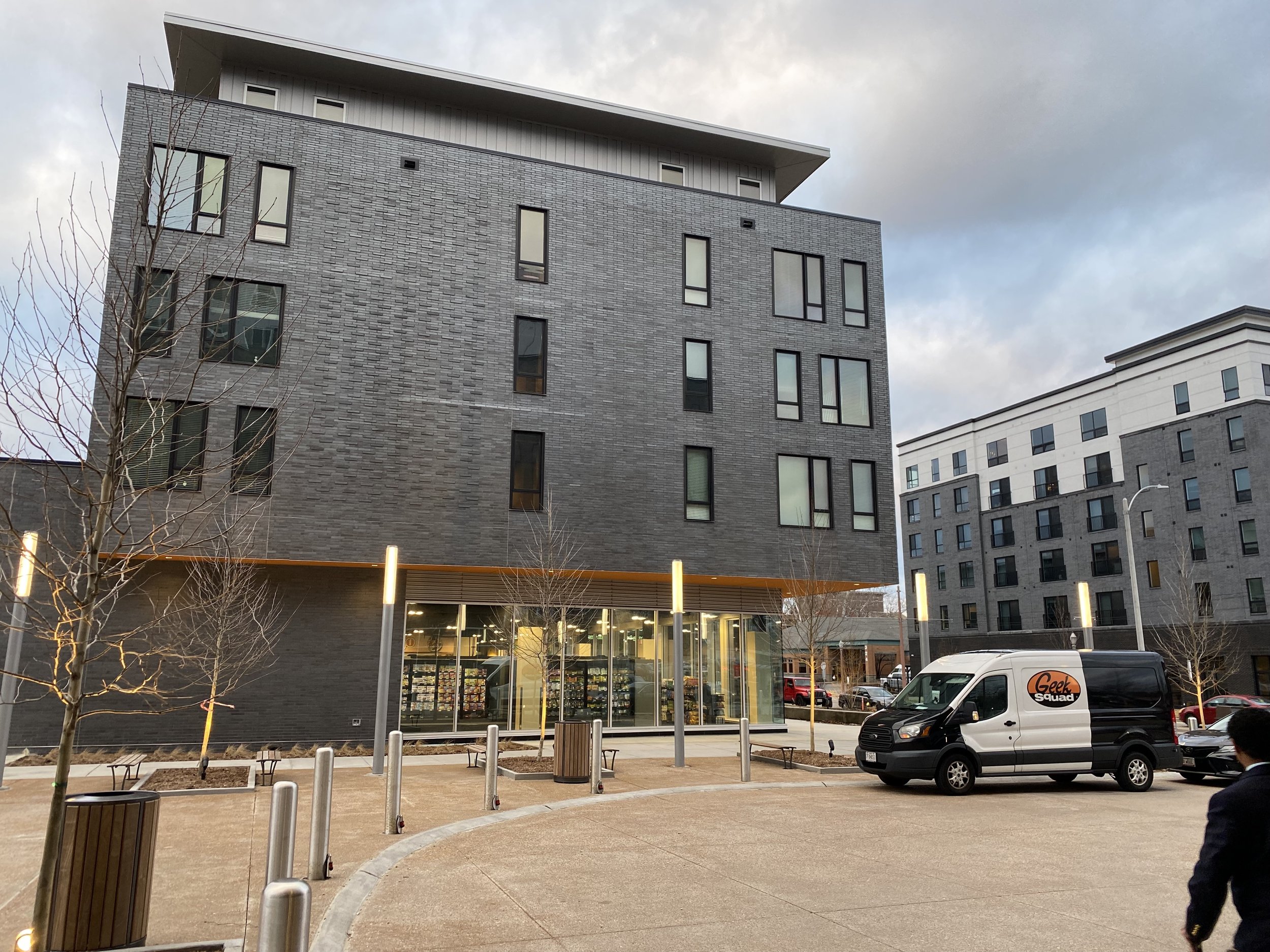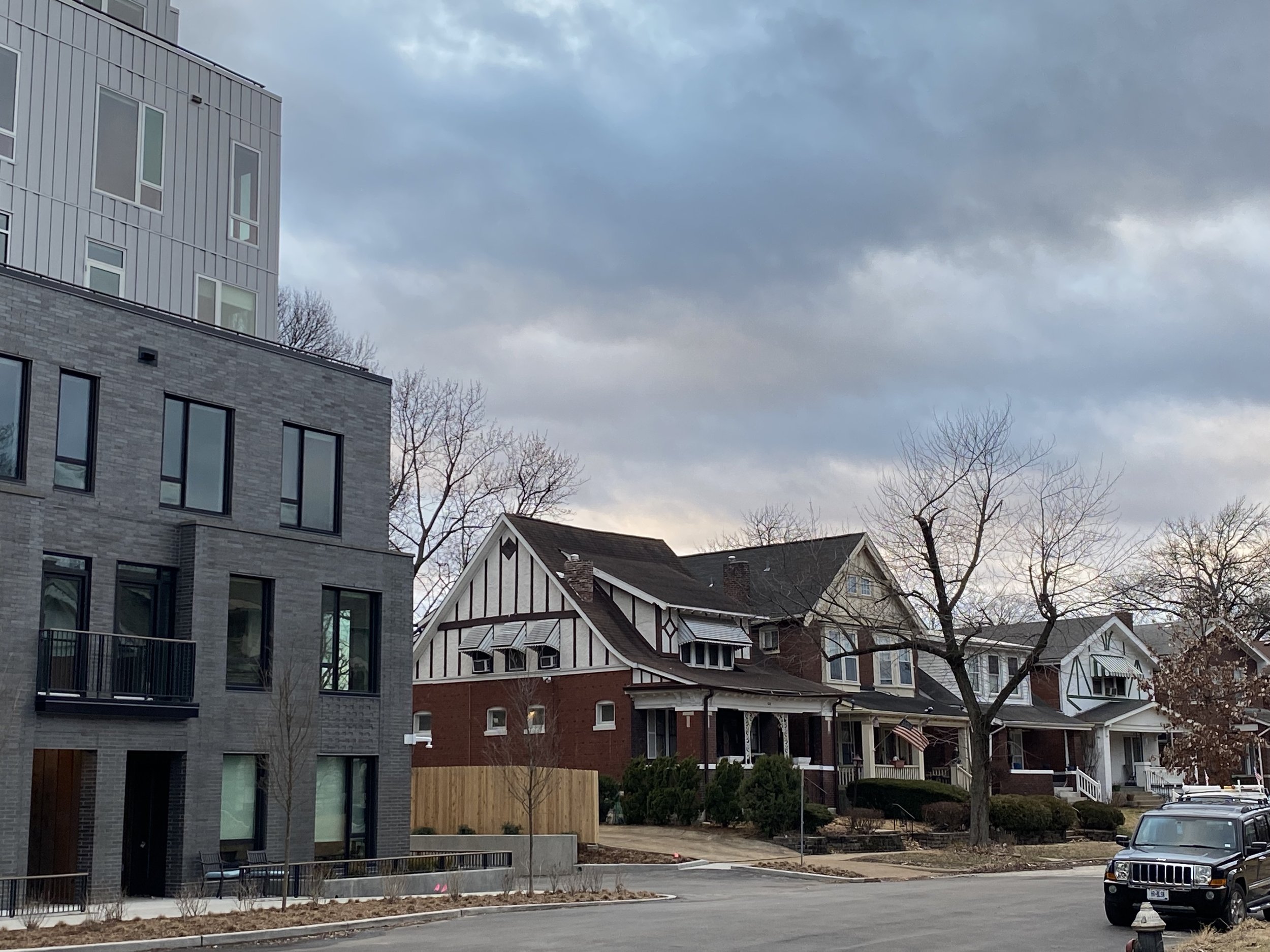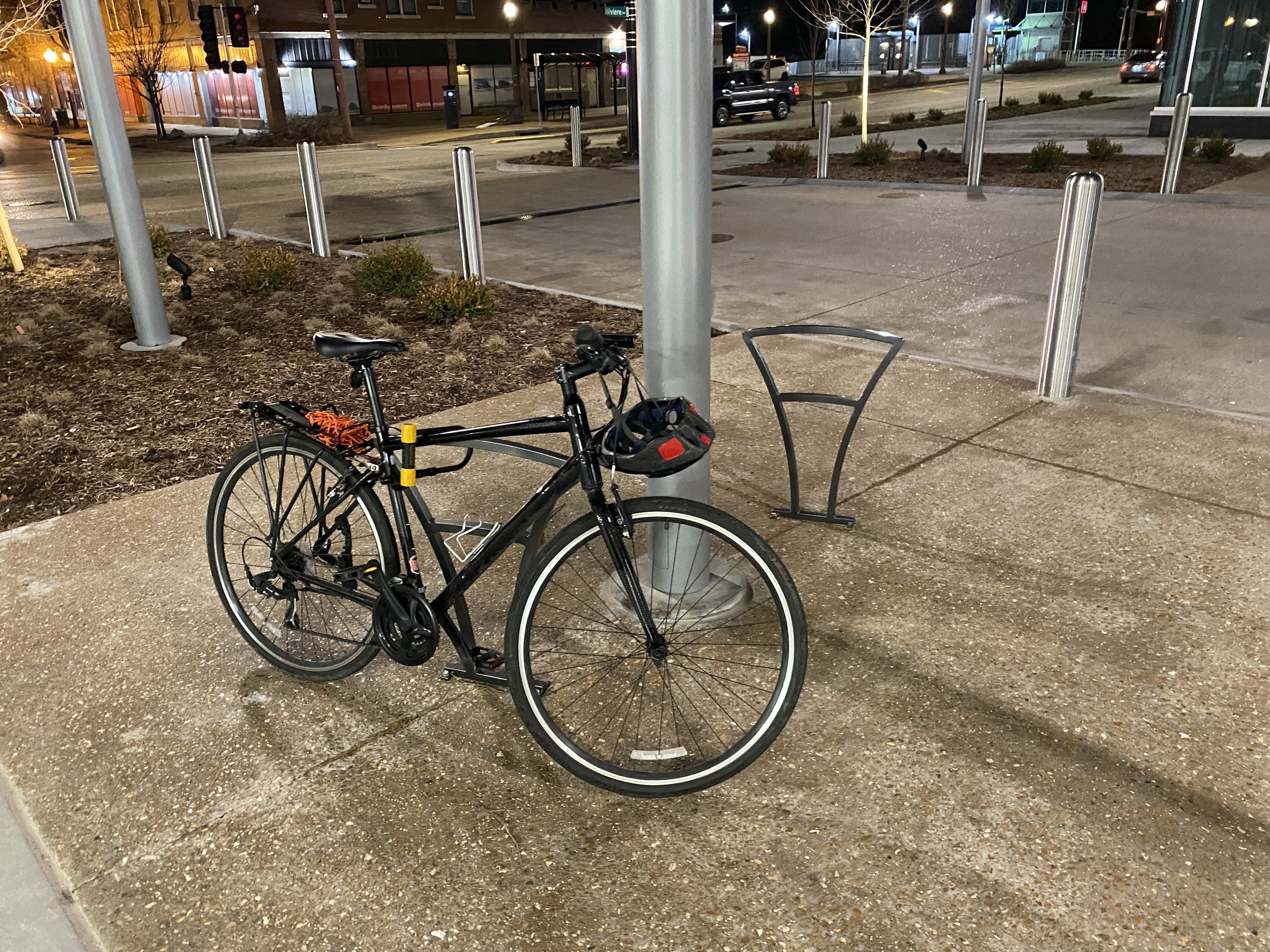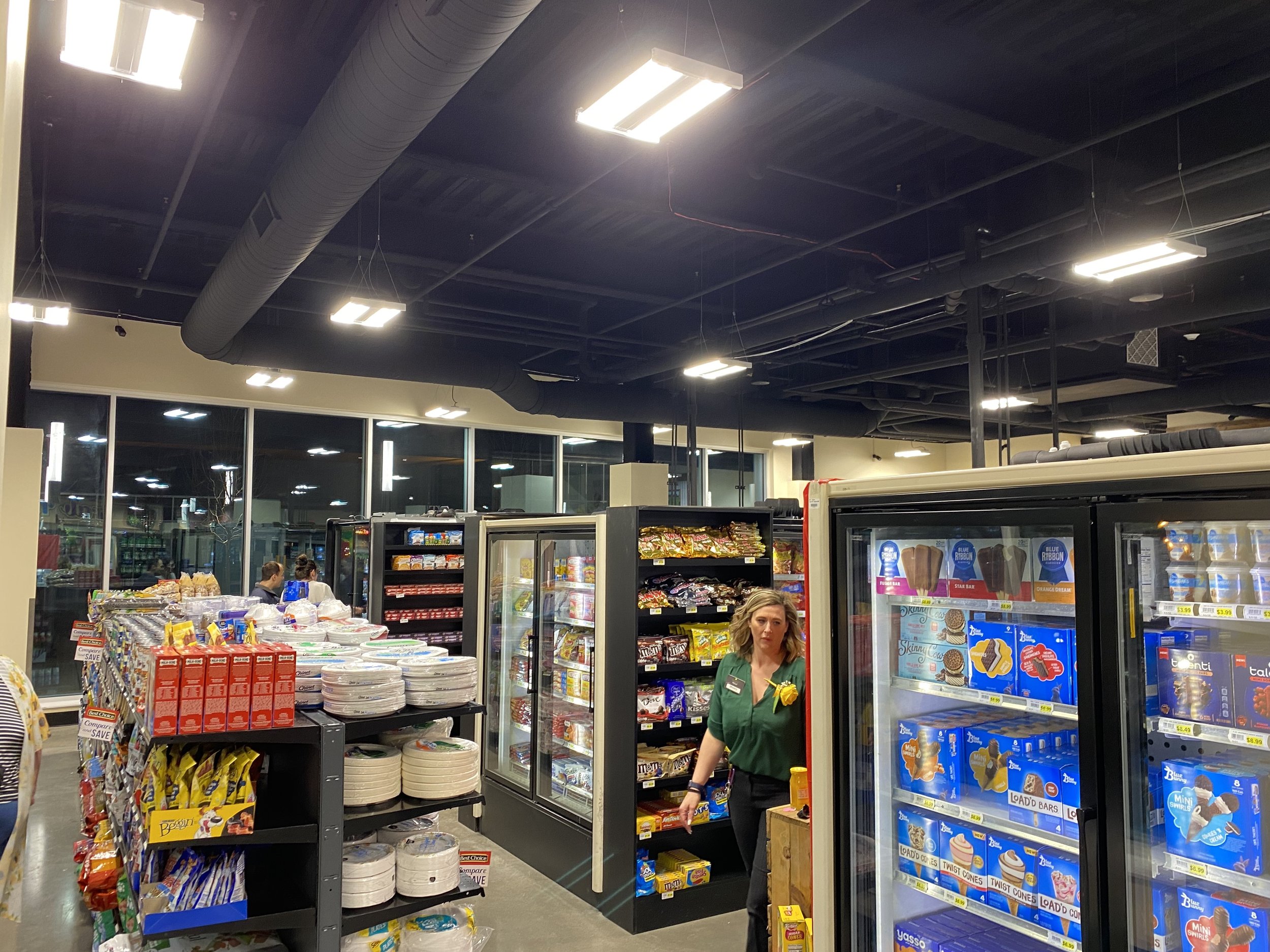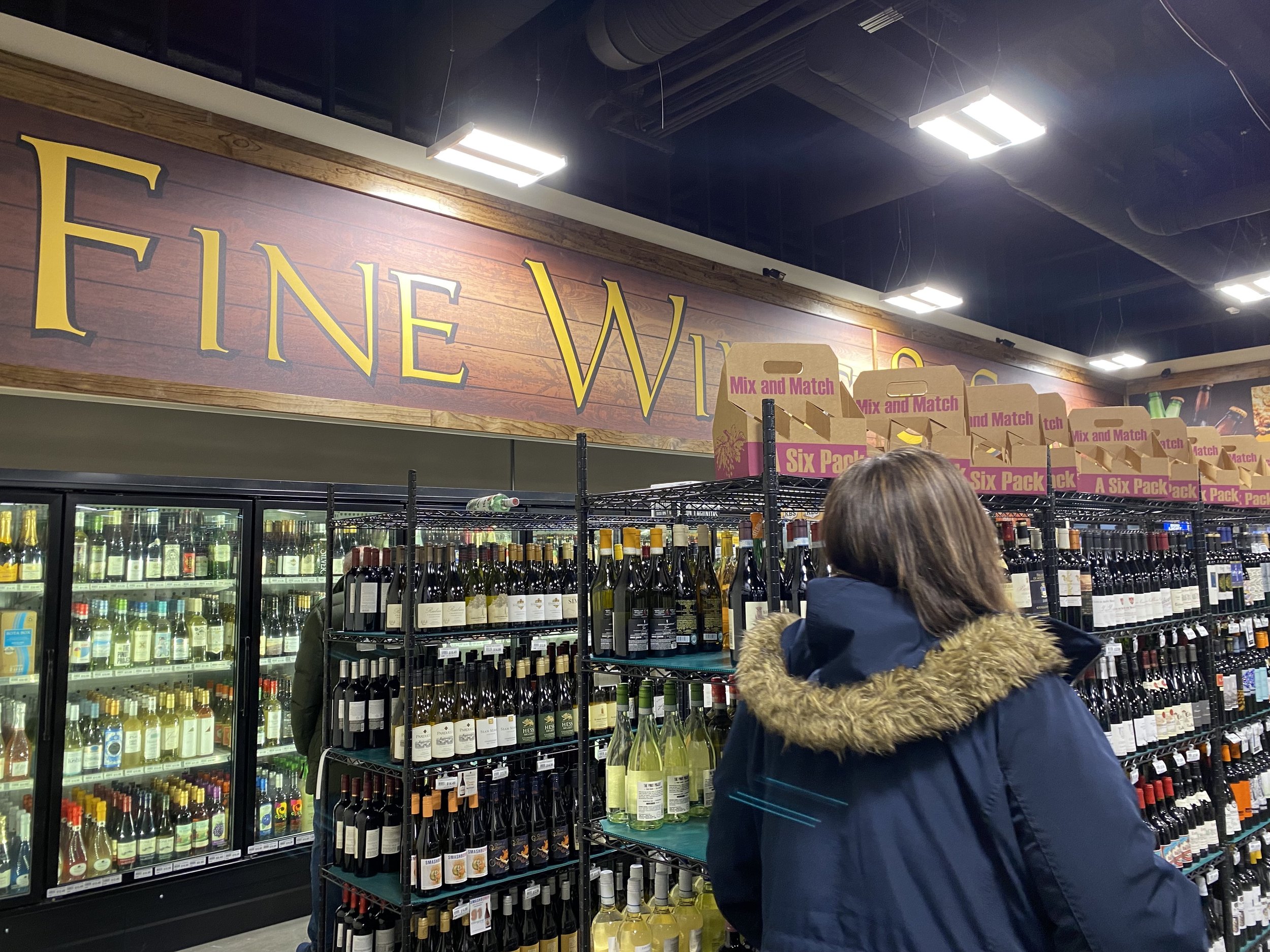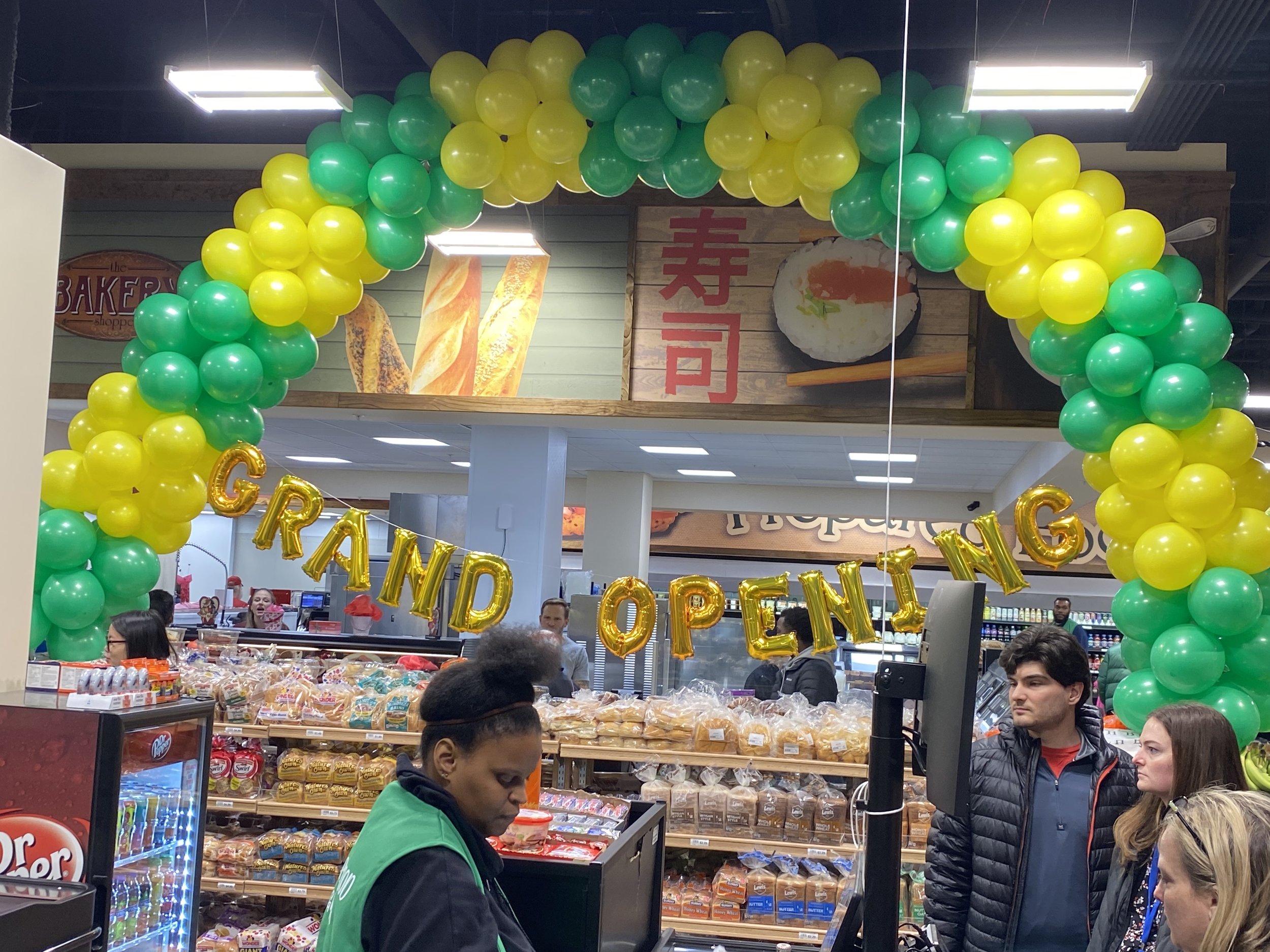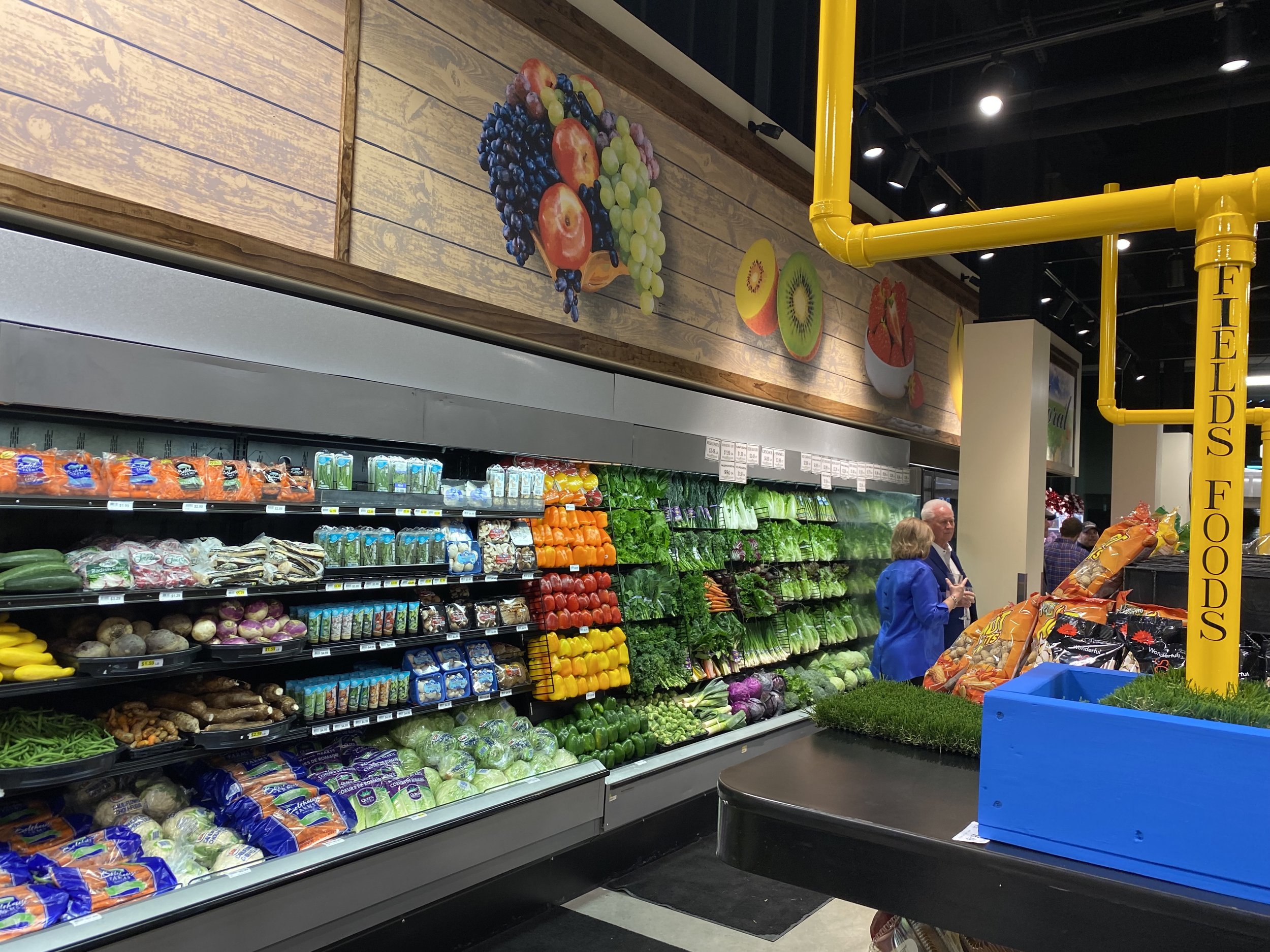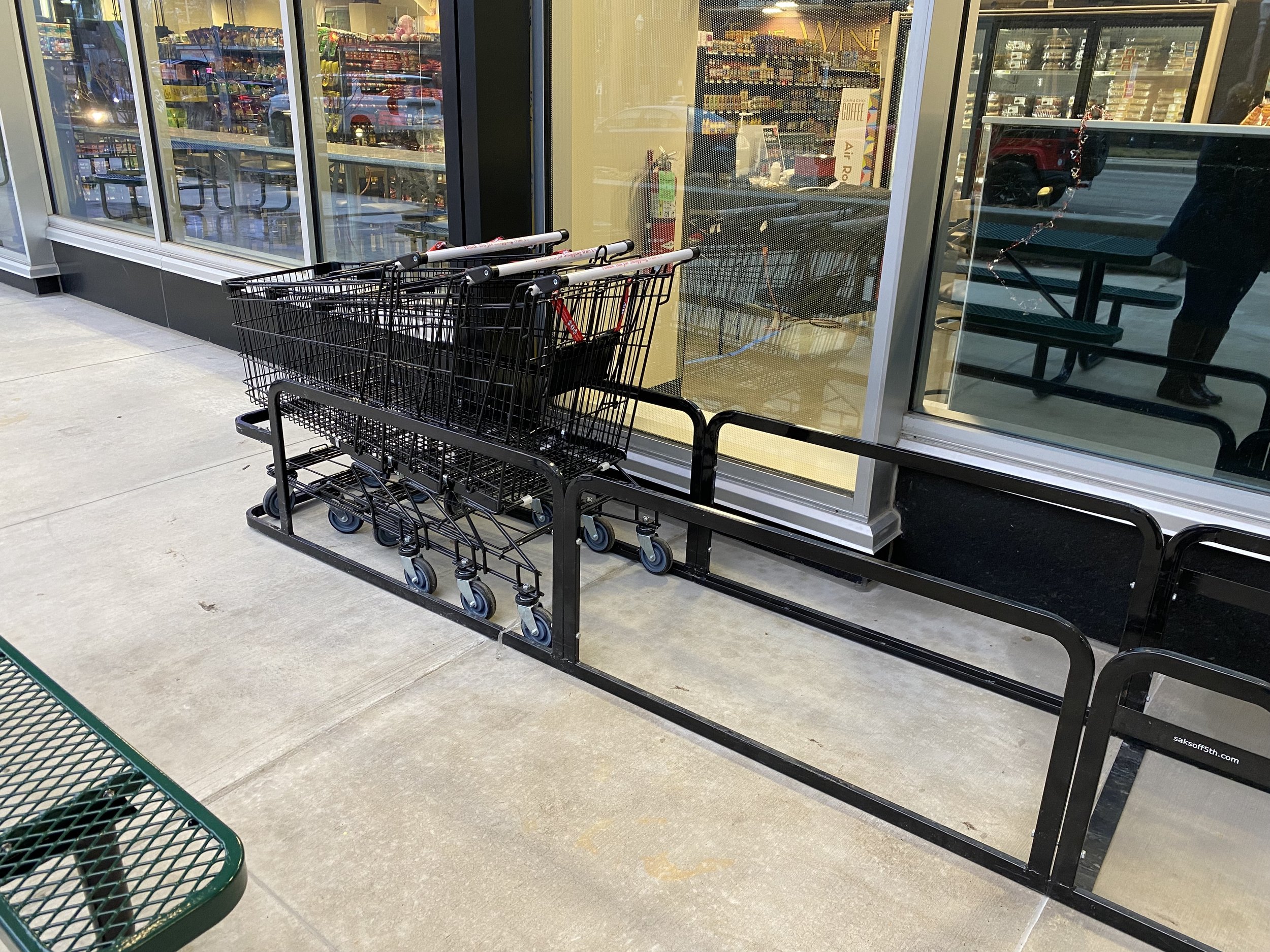Grocery stores or markets can and should blend in with our neighborhoods.
The sprawling, low density suburban model does not do St. Louis’ built environment justice. While a perfect model for the suburbs, with massive setbacks and rarely, if ever, filled to capacity surface parking, these lazy/wasteful footprints create an island in an old city like St. Louis which is blessed with a rectilinear street grid.
As an example, look no further than the largest regional grocer, Schnucks, which is based in the suburb of Maryland Heights, MO west of St. Louis. Schnucks has one urban-scaled grocery store Downtown: Culinaria that is a near perfect complement to the city that surrounds it.
Other than that, there are no urban Schnucks. Dierbergs has zero St. Louis locations. Aldi, Ruler and Save-A-Lot have several St. Louis locations that no one would call urban-designed. Maybe, maybe the Aldi on Gravois and Kingshighway meets the minimum standard, but it’s not perfect.
Look no further than the Southwest Garden Neighborhood, where the Arsenal Schnucks sprawl is a stark contrast to the homes east and west of the grocery store.
Or the Aldi at Kingshighway and Delmar where the vast waste of space is best seen from a birds eye view. Note the neighborhood to the north.
Another example of massive setbacks and over-supplied surface parking at the Gravois/Hampton Schnucks.
There does seem to be one local company, Fields Foods, that has the best examples of urban-scaled grocery stores in St. Louis. And, these aren’t just markets, they are full grocery stores (fruit/veg, meat, dairy, dry goods, prepared foods, booze).
Fields Foods is headquartered in Lafayette Square, so they are a St. Louis-based company.
While this post is not an endorsement for Fields, I do want to discuss the potential for rightsizing a grocery store in a city like St. Louis that continues to lose population and has a much higher bar for surroundings and neighborhood architecture. Think for a moment of how grocery stores can or should fit into our city. We have to be more creative than the standard suburban land-wasting excesses and dead to the world architecture.
We don’t need super-blocks for a grocery store. But are St. Louisan’s willing to become more down to Earth in their shopping habits, or will they still covet the current big grocer model or worse yet, shop in the suburbs, exporting all tax dollars and jobs to another city that directly competes with St. Louis?
Again, I want to make it clear, I have nothing against Schnucks, Aldi, Save A Lot or any other grocer who serves us. We need grocery stores, they are essential and directly correlate to quality of life. I shop at all of these locations…and Fresh Thyme, a civilized, newish option that I’ve grown to really appreciate. I’ve noticed it has the highest foot traffic for any grocery store that I’ve seen in St. Louis. Culinaria does too. It occupies space that already existed and didn’t mow down the grid for a sprawl zone.
Apologies for the terrible photos, i was in a hurry.
So to help make my point that Fields Foods, and the newcomer Fresh Thyme, seem to be trying the hardest to fit into a more complementary setting, I’ll share some photos and commentary to provide context for you to consider.
According to the Fields Foods website, there are five location in St. Louis and they are planning a sixth location in the small suburban town of Pagedale, MO a city of 2,329 that is 95% Black and 3% white. This location will be less than a mile from the St. Louis border.
But, through my visits, I came to find that one of these locations may be closed.
Here are the St. Louis locations:
6300 Clayton Avenue in the Clayton - Tamm Neighborhood
1500 Lafayette Avenue near the Peabody-Darst-Webbe Neighborhood
1706 Washington Avenue in the Downtown West Neighborhood
299 DeBaliviere Avenue in the Skinker DeBaliviere Neighborhood
625 N. Euclid Avenue in the Central West End Neighborhood
When I stopped by each location, it appears the CWE location is closed. Per a CWE resident I talked to on the street, they have been scaling back over time and became more or less a junk food/liquor store. I can’t corroborate this, as it was closed when I arrived. It is located in a beautiful STL building. I guess it is not meant to be in this location.
When I visited the other locations, I did notice a street banner that indicated the CWE site was no longer being included in advertising.
The Dogtown location occupies part of the street-level retail space in a new mixed use building that was built upon a long-shuttered lumber yard.
The location is perfectly sized with just about anything you’d need. It has nods to the Irish pride that this part of town sports. A great example of a need for the essentials blending into the neighborhood.
The Downtown West location is perfectly situated in a gorgeous building on Washington Avenue.
Shannon and I stopped by the grand opening of the newest Fields location at 299 DeBaliviere Avenue, in the first floor of the Expo at Forest Park TOD building.
Right across the street from the Forest Park / DeBaliviere Metrolink station, this part of town is growing more dense and less suburban.
Let’s not forget a suburban strip mall, suburban restaurant and large surface parking lot now has housing and retail spaces. The change is drastic and impressive.
Here’s what recently was:
Here’s what the surroundings look like as of publishing.
Notice a few things: sidewalks, street trees, landscaping, on-street parking. City vs. suburb design and land use. Building with residential and businesses, built to the street.
The bike racks are unique, you might miss them.
The place was packed with curious neighbors and shoppers. Here are a few perspectives of the interior offerings:
The outdoor sidewalk seating will surely be popular with folks grabbing a bite before boarding the Metrolink just steps away.
The Lafayette location is decidedly suburban in design, but seems to be a welcomed business in the area.
Best of luck to Fields and Fresh Thyme here and in the suburbs. I hope they continue to expand with these smaller footprint locations in other neighborhoods.
Grocery stores are a quality of life necessity. Let’s try to design these better to blend in with our neighborhoods.
Shop the city!



